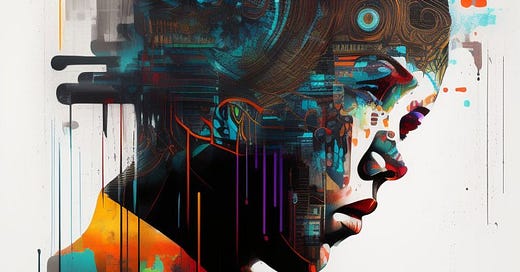AI tools are popping up everywhere in our daily work routines, especially if you’re in UX or digital product design. By now, I’m sure you’ve realized this isn’t just a “trend”. It’s here to stay. So, the trick isn’t just using these tools; it’s about making them work the way you want.
Today, I’m going to show you how to turn your ChatGPT into a customized work buddy. It’s way easier than you might think. Let’s jump in.
ChatGPT offers two key paths for personalization:
Customizing ChatGPT with built-in settings
Creating your own GPT with the “My GPTs” feature
While both options let you shape how ChatGPT responds, they serve different goals.
1. Customizing ChatGPT with built-in settings
It’s simple, quick, doesn’t require technical knowledge and 100% free. You can do this customization using your free account.
When to use this
You want ChatGPT to remember your profession or goals (e.g., UX Designer, Educator, Developer).
You prefer responses in a certain tone (e.g., clear, concise, research-based).
How to do it
1. Go to ChatGPT
Open chat.openai.com
Log in with your OpenAI account
Click on your name or profile icon (bottom-left corner)
Select “Custom Instructions”
Fill out the two prompts:
What would you like ChatGPT to know about you to provide better responses?
(e.g., “I’m a UX designer focused on accessibility and inclusive digital experiences.”)
How would you like ChatGPT to respond?
(e.g., “Use a clear, practical tone. Avoid jargon. Focus on functionality and user needs.”)
4. (Optional) Turn Memory On
In “Settings” > “Personalization” > Memory
Toggle the switch to allow ChatGPT to remember useful information across chats
See? Five minutes and you’re done!
Tip: Try using more detailed prompts to refine your answers even further.
2. Creating your own GPT with the “My GPTs” feature
This feature is ideal if you need a custom AI assistant that behaves in a specific way, can use uploaded documents, or connects to external tools via APIs. It can also be reused across teams.
Note: You can only access this feature with a ChatGPT Plus account.
When to use this
You want to build a reusable assistant (e.g., “UX Audit Bot” or “AI Writing Coach”).
You want to upload reference files or link to documentation.
You want others to share or use your GPT with consistent behavior.
How to do it
Click “Explore GPTs” in ChatGPT (top-left menu)
Or go directly to chat.openai.com/gpts
Click “Create” in the top-right corner
3. Use the GPT Builder
You’ll be guided with a friendly chat interface to:
Name your GPT
Upload files or provide background info
Define how it should respond
Choose tools (e.g., browsing, code interpreter)
You can also:
Add instructions (e.g., “You are an AI assistant for UX designers conducting usability audits.”)
Upload docs (like a UX checklist, brand guidelines, research templates)
Turn on APIs (optional, if you or a dev wants to expand functionality)
4. Preview and Publish
Save it privately for personal use, or publish it so others can try it.
It takes about 10 to 20 minutes to set it up. Easy peasy!
These little tweaks could seriously boost your productivity and help create a team-friendly AI workflow at work. So, pick your favorite setup style and start pumping UX value into your business!
If you’re wondering where to start with AI interactions, I recommend the AI-Powered UX: Next-Gen Product Design course on Udemy. In this course, I teach how to use AI for research, data analysis, ideation, and prototyping, transforming the way you design digital products. The course is in English but includes Portuguese subtitles.





